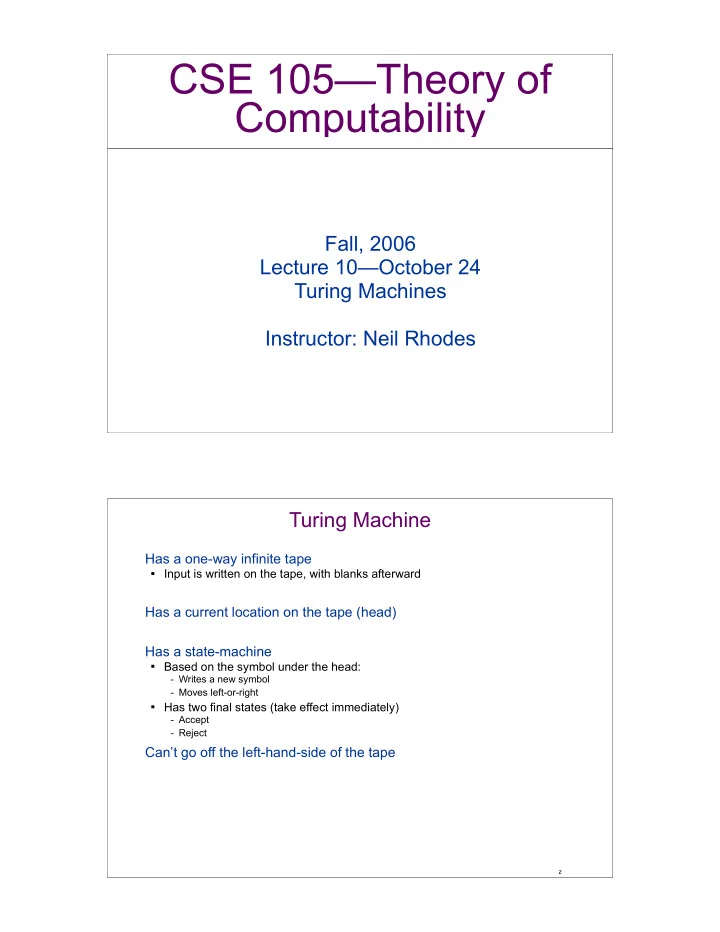

CSE 105—Theory of Computability Fall, 2006 Lecture 10—October 24 Turing Machines Instructor: Neil Rhodes Turing Machine Has a one-way infinite tape � Input is written on the tape, with blanks afterward Has a current location on the tape (head) Has a state-machine � Based on the symbol under the head: – Writes a new symbol – Moves left-or-right � Has two final states (take effect immediately) – Accept – Reject Can’t go off the left-hand-side of the tape 2
Example Turing Machine L={x n y n z n | n � 0} 3 Formal definition 7-tuple � Q: set of states � � : input alphabet (doesn’t contain � ) � � : tape alphabet (includes � , subset of � ) � � : Qx �� � x{L,R} transition function � q 0 ∈ Q: start state (first state will be start state) � q accept ∈ Q: accept state (halts immediately) � q reject ∈ Q: reject state (halts immediately) 4
Formal Definition A configuration is: � a state, q � tape contents � location of head Represented with: One configuration can yield another configuration if appropriate based on transition function � ua q i bv yields u q j acv if � ( q i ,b ) = � ua q i bv yields uac q j v if � ( q i ,b ) = � q i bv yields q j cv if � ( q i ,b ) = � q i bv yields c q j v if � ( q i ,b ) = � ua q i is treated as Turing machine M accepts (rejects) string w if it there is a sequence of configurations from the start configuration (q0w) to an accepting (rejecting) configuration. The language recognized by M (or the language of M) is denoted 5 Recognizing vs. Deciding L is Turing-recognizable (recursively enumerable if) � There exists a TM, M where every string s in L – is accepted by M L is Turing-decidable (recursive) if � There exists a TM, M where, for every string s: – If S in L, M accepts L – If S not in L, M rejects L � That is, M (eventually) halts on all inputs 6
Recommend
More recommend